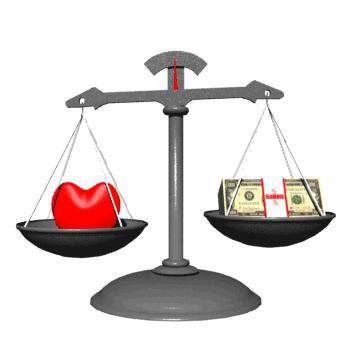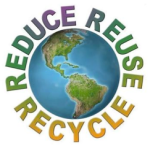“The economy is not able to grasp the complexity of the world only by models ” – Olivier Blanchard
A market-based economy is where goods and services are produced without obstruction or interference, and exchanged according to demand and supply between participants (economic agents) by barter or a medium of exchange with a credit or debit value accepted within the network, such as a unit of currency and at some free market or market clearing price.
The sole intention is the maximisation of shareholders value.
It is boosted by creation of debt by the banking system.

1. Circular economy
The circular economy is a generic term for an industrial economy that is, by design or intention, restorative and in which materials flows are of two types, biological nutrients, designed to re-enter the biosphere safely, and technical nutrients, which are designed to circulate at high quality without entering the biosphere.
2. Knowledge economy
The knowledge economy is the use of knowledge technologies (such as knowledge engineering and knowledge management) to produce economic benefits as well as job creation.
3. Social entrepreneurship – social economy
Social economy refers to a third sector in economies between the private sector (business) and the public sector (government). It includes organizations such as cooperatives, nonprofit organizations, and charities.
The social economy spans economic activity in the community, voluntary and social enterprise sectors. The economic activity, like any other economic sector, includes: employment, financial transactions, the occupation of property, pensions, trading, etc.
The social economy usually develops because of a need to find new and innovative solutions to issues (whether they are socially, economically or environmentally based) and to satisfy the needs of members and users which have been ignored or inadequately fulfilled by the private or public sectors.
4. Informal complementary economy and local barter
Complementary economies are systems where exchange of goods and services take place, outside official circuits.
– With complementary currencies : the products and servces are paid for with mutual or local currencies. Most of the time they are « soft currencies », and are tolerated by the government for their social added value. But there are « hard » complementary currencies, integrated in the accounting system, like C3 or WIR in Switzerland.
– Black market : illegal trading, or outside balance sheets and accounting
– Volunteer work : people working for the common good wiothout waiting any payments ; it’s a gift economy.
– Barter : is a system of exchange by which goods or services are directly exchanged for other goods or services without using a medium of exchange, such as money. It is distinguishable from gift economies in that the reciprocal exchange is immediate and not delayed in time. It is usually bilateral, but may be multilateral (i.e., mediated through barter organizations) and usually exists parallel to monetary systems in most developed countries, though to a very limited extent. Barter usually replaces money as the method of exchange in times of monetary crisis, such as when the currency may be either unstable (e.g., hyperinflation or deflationary spiral) or simply unavailable for conducting commerce.
5. Gift Economy:
A gift economy, gift culture or gift exchange is a mode of exchange where valuables are given without an explicit agreement for immediate or future rewards.
6. Performance or Functional Service economy
Performance or Functional Service economy replaces the sales of a good into a service or integrated solution answering the same features, or more, whilst using less resources and energy, creating positive social and environmental externalities. Under some conditions, it is an exchange modality which allows a better integration of sustainable development to the economy.
7. Sustainable Development
Sustainable development refers to a mode of human development in which resource use aims to meet human needs while ensuring the sustainability of natural systems and the environment, so that these needs can be met not only in the present, but also for generations to come.
8. Blue Economy
potential benefits in connecting and combining seemingly disparate environmental problems with open-source scientific solutions based upon physical processes common in the natural world, to create solutions that are both environmentally beneficial and which have financial and wider social benefits.
9. Sharing Economy, collaborative economy or coöperation capitalism
The sharing economy refers to economic and social systems that enable shared access to goods, services, data and talent. These systems take a variety of forms but all leverage information technology to empower individuals, corporations,non-profits and government with information that enables distribution, sharing and reuse of excess capacity in goods and services.A common premise is that when information about goods is shared, the value of those goods increases, for the business, for individuals, and for the community.
10. Asset-based Economy
Asset-based economy refers to a post-industrial macroeconomic state of capitalism in which growth is based largely on appreciation of equity assets, typically financial instrumentssuch as stocks, as well as real estate.
11. Transition Economy
A transition economy or transitional economy is an economy which is changing from a centrally planned economy to a free market.Transition economies undergo economic liberalization, where market forces set prices rather than a central planning organization. In addition to this trade barriers are removed, there is a push to privatize state-owned businesses and resources, and a financial sector is created to facilitate macroeconomic stabilization and the movement of private capital.
12. Long Tail Economy
The term long tail has gained popularity in recent times as describing the retailing strategy of selling a large number of unique items with relatively small quantities sold of each – usually in addition to selling fewer popular items in large quantities.
13. Co-operation Economy
Co-operative economics is a field of economics, socialist economics, co-operative studies, and political economy, which is concerned with co-operatives.
14. Agorism, Counter-Economics, Economic secession
A libertarian social philosophy that advocates the goal of the bringing about of a society in which all relations between people are voluntary exchanges by means of counter-economics, thus engaging in a manner with aspects of peaceful revolution.
The Counter-Economy is the sum of all non-aggressive Human Action which is forbidden by the State. Counter-economics is the study of the Counter-Economy and its practices. The Counter-Economy includes the free market, the Black Market, the “underground economy,” all acts of civil and social disobedience, all acts of forbidden association (sexual, racial, cross-religious), and anything else the State, at any place or time, chooses to prohibit, control, regulate, tax, or tariff. The Counter-Economy excludes all State-approved action (the “White Market”) and the Red Market (violence and theft not approved by the State).
Economic secession has been variously defined by sources. In its narrowest sense, it is abstention from the state’s economic system – for instance by replacing the use of government money with barter, Local Exchange Trading Systems, or commodity money (such as gold).
15. Ethical Economy
Ethical Economy introduces to ethical economics and interprets the begin of a new, radically different economic system in which production is mainly collaborative and social, and in which the value is based on the quality of social interactions and relationships rather than on the quantity of productive time.
16. Quantum economics
Bank money is indisputably the starting point of Bernard Schmitt’s analysis. Referring to double-entry bookkeeping, he shows that the emission of money is an instantaneous event taking place every time a payment is carried out by banks. Since no positive asset can be created out of nothing, quantum economists maintain that, far from being a net asset, money is a purely numerical vehicle issued by banks in a circular flow defining its instantaneous creation and destruction. Money is therefore nothing more than a means of payment, a numerical vehicle through which payments are conveyed from purchaser to seller and whose existence in chronological time coincides with that of the payment it conveys: a mere instant.
17. Systemic economy
An economical paradigm where 2 aspects are crossed: the notion of ecosystem of stakeholders (instead of linear models), and the notion of value balance sheets on 7 levels (instead of only one value measuring balance sheet: 7D-Value algorythm).
The projects, companies or ventures are all based on contributing to “common good” (instead of only to shareholders value).







You must be logged in to post a comment.